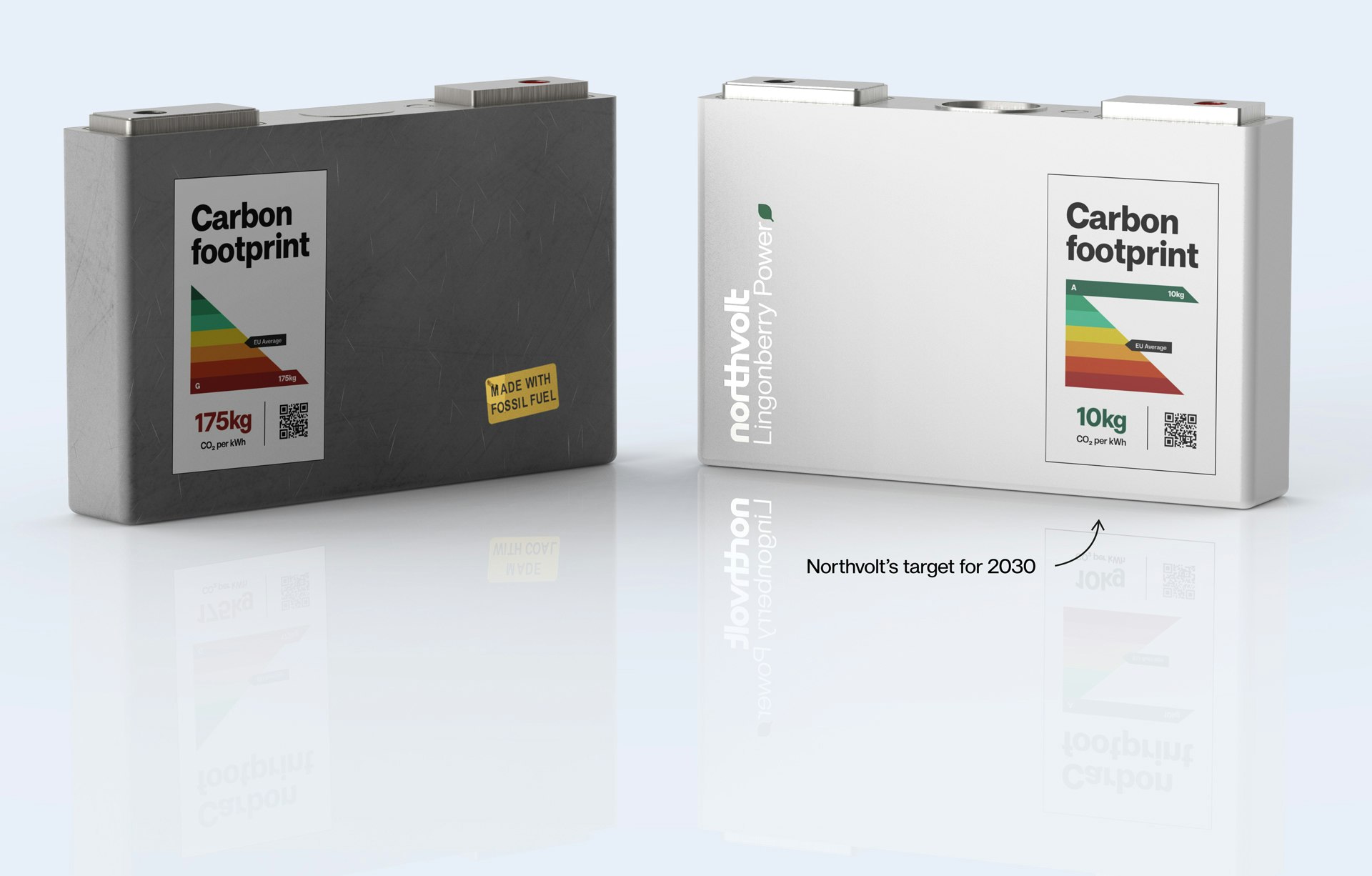A binary choice: Europe’s chance for a sustainable battery industry
10 December, 2020
Today the European Commission adopted its proposal for a new EU regulation for batteries. With it comes a chance for Europe to take the lead on setting the global standard for sustainability in battery industries. But chance is all it will remain without concrete commitment in the coming years.

Today the European Commission adopted its proposal for a new EU regulation for batteries. With it comes a chance for Europe to take the lead on setting the global standard for sustainability in battery industries. But chance is all it will remain without concrete commitment in the coming years.
The proposal is much aligned with what Northvolt strives for in its mission to deliver a sustainable supply of lithium-ion batteries for Europe. Notable highlights include mandating of carbon footprint labelling, new mandatory procedures to ensure ethical sourcing of raw materials and criteria on recyclers for more ambitious battery recycling.
Legislating sustainability into the fabric of the emerging European battery industry in these ways will provide it with a unique competitive edge and is unequivocally the right thing to do. Both for the sake of the planet of today and the industry of tomorrow.
In the European Commission’s new proposal we have now a clear direction for a regulatory framework for batteries in Europe.
A firm foundation
Headlining the proposal, the European Commission introduces mandatory carbon footprint labelling of all batteries manufactured or sold in Europe. This is key. A simple yet effective means to deliver transparency on the singular most important aspect to a product’s environmental impact, labelling will shift the industry towards sustainability. And with it, contribute to a lower net carbon cost for the electric vehicle transformation.
Consider in isolation the impact of a clean power base. The International Energy Agency’s sustainable development target calls for 245 million electric vehicles by 2030. The difference between producing batteries for this fleet in a largely fossil-fuel based grid versus an overwhelmingly emission-free grid: a little over 1.1 billion tons of CO2 – an amount greater than the annual CO2 emissions of Germany (759 million tons).
While carbon labelling would serve multiple beneficial purposes as a new metric in industry, at least one is directly outlined by the proposal itself, in its calling for a European ban on the lowest category batteries, featuring the highest carbon footprint, from 2027.
Acknowledging the importance of setting a sustainable agenda on raw materials and energy consumption within the battery industry, the proposal would establish several welcome initiatives.
First, it demands that battery raw materials are procured according to established, internationally recognized due diligence principles for ethical and sustainable sourcing. The move should be welcomed as one which will enhance supply chain practices and transparency, whilst upholding Europe’s commitment to human rights.
Second, it lays out regulations promoting and enabling battery recycling. Here, the European Commission outlines ambitions for end-of-life recovery of all battery metals, with individual recycling targets for each metal fraction and a new standard for measuring the amount of recycled material within new batteries. Together with requirements for the use of high efficiency recycling processes, these measures will advance Europe towards closing the loop on batteries.
The work ahead
While there is plenty to be excited for, the proposal is not without shortcomings. Most notably, the timeframe attached to the roll out of carbon labelling in 2024 – being dependent on technical discussions to be held 2022 to 2023 – is too relaxed. An accelerated timeframe for carbon labelling should be undertaken, geared towards implementation in 2022.
Although just emerging, the European battery industry is moving at tremendous speed. It will soon be delivering significant volumes to market and as such there is an immediate need for carbon labelling.
While it is crucial that efforts be directed towards the formulation of supporting methodologies, we cannot afford for the work to be unnecessarily long-winded.
Regulations must hold weight and credibility, and methodologies behind carbon labelling and accounting of energy consumption associated with production in particular must be evidence-based. Acknowledgement of carbon offsets or green certificates (such as Guarantees of Origin in the current Renewable Energy Directive), for instance, cannot continue in its present form if carbon labelling is to be meaningful. The existing Product Environmental Footprint framework, with slight adjustment, provides a credible base for carbon labelling.
In the European Commission’s new proposal we have now a clear direction for a regulatory framework for batteries in Europe. It is not fully built out with the critical details it requires to deliver on all its intentions and it still needs to pass the European Parliament and Council, but it is a start. Now is the time for commitment.
Amidst all the upset that 2020 brought with Covid-19, a light shone through from the electric vehicle industry. By mid-2020, electric vehicles matched diesel combustions engines in terms of new vehicle registrations. In September, every fourth new vehicle registered was electric. This remarkable situation – one quite unanticipated only a few years ago – underlines the importance of taking a clean direction. The difference between a world with clean batteries and one without is binary.
Read the European Commission’s press release: Green Deal: Sustainable batteries for a circular and climate neutral economy.